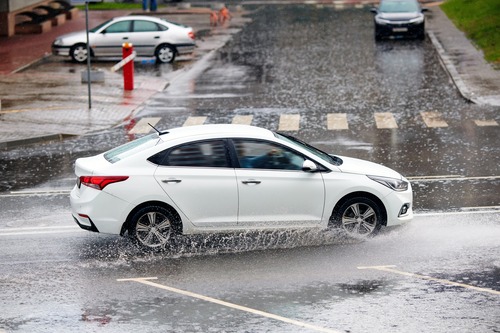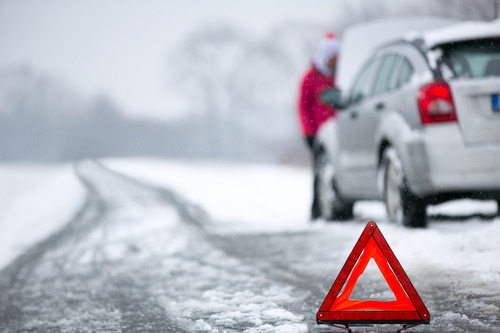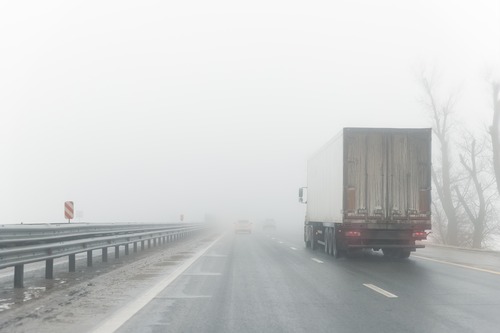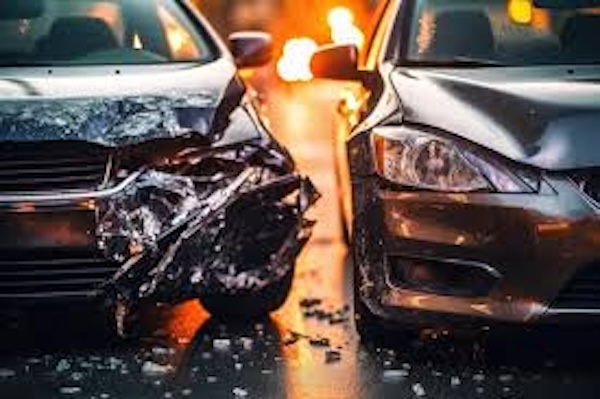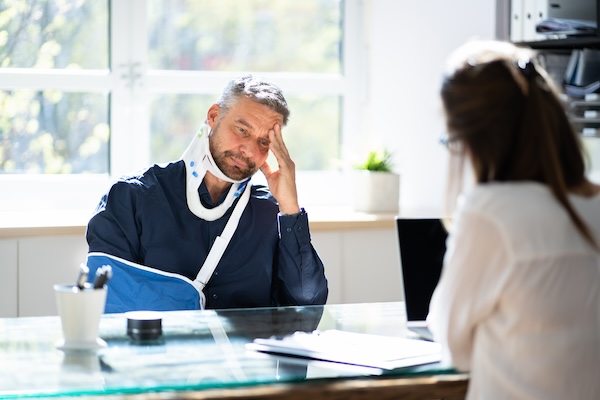- Car Accidents
At The Super Lawyer, we are a team of experienced personal injury attorneys committed to helping accident victims get the justice and compensation they deserve. Our firm handles a wide range of cases, including car accidents, truck accidents, slip and falls, and wrongful death. We focus on delivering strong legal representation with integrity, professionalism, and a client-first approach every step of the way.
Bad weather accidents happen every day, often with little warning and serious results. Rain, snow, fog, and high winds can turn safe roads into dangerous zones, increasing the risk of car crashes and property damage. Drivers who understand how adverse weather affects road conditions are better prepared to avoid costly mistakes.
In this blog, you will learn how bad weather affects road safety, how to avoid a weather related accident, what to do if a crash occurs, and why working with an experienced car accident attorney is important to protect your rights and pursue fair compensation.
Know the Risks: Why Bad Weather Accidents Happen
Understanding how and why bad weather accidents happen is the first step to avoiding them. Drivers must know the risks that come with adverse weather conditions and how they affect both the road and other vehicles.
Reduced Traction on Wet or Icy Roads
Wet pavement, icy roads, and slick surfaces reduce tire grip. This lowers vehicle stability and makes it easier to lose control. Rear end collisions and skidding often occur when drivers fail to adjust their speed or following distance. Most weather related crashes happen on wet roads, not snowy ones.
Low Visibility During Weather Events
Heavy rain, dense fog, and snow accumulation limit how far drivers can see. Poor visibility makes it harder to react to traffic signals, road hazards, or stopped vehicles. Car crashes often happen in low-visibility zones because drivers cannot see brake lights or lane markers in time.
Unsafe Driving Behavior in Adverse Weather Conditions
Many accidents caused by bad weather involve drivers who do not adjust their behavior. Failing to reduce speed, ignoring safe following distance, or using cruise control on slippery roads can lead to a serious weather related accident. High profile vehicles are especially at risk during high winds or strong gusts.
Road Surface and Maintenance Issues
Slippery roads are more dangerous when maintenance is poor. Potholes, standing water, and faded lane markings become harder to detect during inclement weather. In some cases, bad weather accidents happen because road maintenance crews did not respond fast enough to clear snow or treat icy roads.
Contributing Factors Beyond the Driver
Other drivers also play a major role in bad weather accidents. A cautious driver may still be hit by someone driving too fast for conditions. Trucking companies and commercial vehicles can cause large-scale accidents due to weight and speed. When multiple vehicles are involved, determining fault becomes more complex under Georgia law.
Weather Conditions Can Overwhelm Infrastructure
Heavy snow, strong winds, and sudden storms reduce roadway capacity. This can lead to delays, blocked lanes, or pileups. Traffic laws may not prevent accidents when road conditions change faster than drivers can react. These weather events increase the chance of crashes even when most drivers are careful.
Weather and Road Conditions That Increase Crash Risk
Certain weather and road conditions increase the chance of a bad weather accident. Recognizing these conditions helps drivers avoid risky situations and adapt their behavior.
Wet Pavement and Slippery Roads
Wet pavement is one of the leading causes of weather related crashes. Rainwater mixes with oil and debris, reducing traction. Slippery roads can cause a driver to lose control, especially during braking or turning. Rear end collisions often happen when drivers fail to leave a safe following distance on slick surfaces.
Icy Roads and Snow Accumulation
Ice forms a thin, hard-to-see layer that makes stopping difficult. Snow accumulation also limits tire grip and covers road markings. Many bad weather accidents happen when vehicles slide through intersections or off the road. Snow and ice also reduce visibility and increase stopping distances.
Dense Fog and Low Visibility
Dense fog is a common cause of weather related car accidents. It hides other vehicles, road signs, and traffic signals. Drivers often misjudge speed and distance, which can lead to sudden stops or lane changes. Fog-related crashes usually involve multiple vehicles due to reduced reaction time.
High Winds and High Profile Vehicles
Strong winds affect driving stability, especially for trucks, vans, and trailers. High profile vehicles can tip or drift into other lanes. High winds also blow debris onto roads, forcing drivers to swerve or stop suddenly. These factors increase the risk of a weather related accident on open highways or bridges.
Poor Road Maintenance During Adverse Weather
Cracks, potholes, and uneven surfaces become harder to manage during inclement weather. When road maintenance is delayed, these hazards combine with wet or icy conditions to raise crash risk. Bad weather accidents are more likely when roads are not treated or cleared in time.
Faded Markings and Blocked Signals
In heavy rain or snow, faded lane markings disappear. Traffic signals may be blocked by ice or covered in fog. These issues affect decision-making and contribute to weather related accidents. Drivers may drift between lanes or miss a stoplight entirely.
Smart Driving in Adverse Weather: 10 Life-Saving Tactics
Adapting your driving habits during adverse weather can prevent accidents and reduce the chance of serious injury or property damage.
Reduce Speed on Wet or Icy Roads
- Lower your speed during rain, snow, or when roads are slick
- Wet pavement and icy roads reduce tire grip and increase stopping time
- Slower speeds help maintain control and avoid losing traction
Increase Following Distance
- Keep a longer distance between your car and the one ahead
- A safe following distance gives more time to react if other drivers brake suddenly
- Rear end collisions often happen in weather related crashes when spacing is too short
Use Low Beams in Poor Visibility
- Turn on headlights in heavy rain, snow, or dense fog
- Low beams improve your visibility without blinding other drivers
- Avoid using high beams in fog, which reflects light back at you
Avoid Sudden Movements
- Steer, accelerate, and brake gently to avoid losing control
- Quick changes in direction can cause skidding on slick pavement
- Controlled movements help maintain vehicle stability
Stay Off Cruise Control in Hazardous Conditions
- Do not use cruise control on wet or icy roads
- Manual control helps you respond faster to sudden changes in road conditions
- Disengaging cruise control allows better traction and braking
Be Ready to Pull Over
- If visibility becomes too low or road conditions become too dangerous, stop safely
- Pull over to a safe location away from traffic
- Turn on hazard lights if you need to stop on the shoulder
Watch for High Winds
- Be alert for sudden gusts, especially on bridges and open roads
- High profile vehicles are more likely to shift or tip in strong winds
- Hold the wheel firmly and reduce speed in windy areas
Check Weather and Road Conditions Before Driving
- Look up current weather and traffic reports before you leave
- Avoid areas with reported road closures, flooding, or snow accumulation
- Plan alternate routes if needed based on forecasted conditions
Keep Your Vehicle Maintained
- Check tire tread, brakes, and windshield wipers regularly
- Make sure defrosters and headlights work properly
- Vehicle readiness improves safety in inclement weather conditions
Stay Focused and Avoid Distractions
- Do not use your phone or adjust controls while driving in poor weather
- Focus fully on road conditions and surrounding vehicles
- Safe driving behavior reduces your risk during adverse weather conditions
Each of these tactics helps lower the risk of a bad weather accident and keeps drivers safer during challenging weather events.
Legal Aftermath: What to Do After a Bad Weather Accident
A bad weather accident can lead to confusion, injury, and legal complications. Taking the right steps after the crash protects your safety and strengthens your claim.
Prioritize Safety at the Accident Scene
If your vehicle is still operational, move it to a safe location away from traffic. Turn on your hazard lights to alert other drivers. Check yourself and passengers for injuries, and call emergency services immediately if medical help is needed.
Call Law Enforcement and File a Police Report
Always contact law enforcement after a weather related car accident. The police will document details such as vehicle damage, weather conditions, and statements from everyone involved. A police report is a key piece of evidence when determining fault or filing an insurance claim.
Document Road and Weather Conditions
Use your phone or camera to photograph the accident scene, including visible weather conditions such as wet pavement, icy roads, snow buildup, or poor visibility. Take pictures of the damage to all vehicles, skid marks, and any relevant traffic signals. This documentation can show how the adverse weather contributed to the crash.
Exchange Information with Other Drivers Involved
Speak with the other drivers and exchange names, contact details, insurance information, and license plate numbers. Stay calm during the conversation and avoid assigning blame. Make a note of any comments that suggest how the weather affected the accident.
Talk to Witnesses and Gather Testimony
If anyone saw the accident happen, ask for their contact information. Witness statements can be valuable when describing the behavior of other drivers or the impact of hazardous road conditions. Their perspective may support your explanation of the crash.
Notify Your Insurance Company Promptly
Report the accident to your insurance provider as soon as you can. Provide clear details about the time, location, and weather conditions. Be honest and concise in your account. Ask your insurer what documentation is needed to move the claim forward.
Avoid Discussing Fault Before an Investigation
Even if you feel responsible, do not admit fault at the scene or during early conversations. Let the facts and evidence guide the investigation. In weather related crashes, multiple factors like road conditions, driver error, or visibility issues may have played a role.
Consult a Lawyer for Legal Advice
If the accident caused serious injuries, major property damage, or involves unclear fault, contact a personal injury lawyer. Legal advice helps you understand your options, especially if other vehicles or poor road maintenance played a part in the incident. A lawyer can also guide you through insurance disputes and help you seek fair compensation.
Contact an Experienced Car Accident Attorney Today!
If you’ve been involved in a bad weather accident, our team at The Super Lawyer is ready to help you understand your legal rights, assess your claim, and take action to pursue fair compensation for your injuries, property damage, and other losses caused by hazardous road and weather conditions.
Contact us at 404-574-4308 for a free case consultation today!
